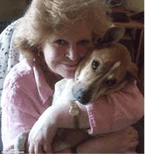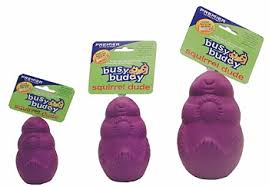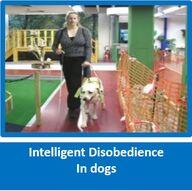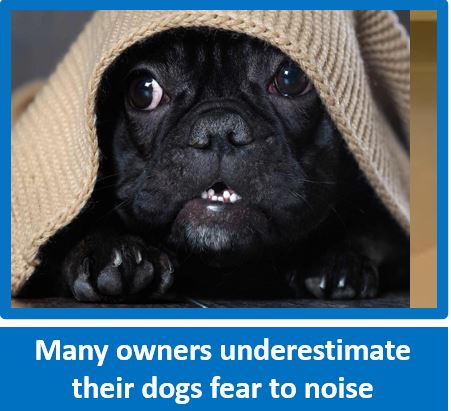New shelter dog not settling down?
by Scotty Valadao - Canine Behaviourist - Friends of the Dog
by Scotty Valadao - Canine Behaviourist - Friends of the Dog

On average, a dog will adjust to its new home within 2 -3 weeks and will then feel more settled and secure but this is not always the case. We have come across many rescue dogs that just don’t seem to be able to settle in the new environment and the new owner is at a loss to know why.
The most common type of behaviour we have observed is the dog that is aloof, not interested in its new family, wants to spend time alone and seems to make no effort at all to fit in. While all the family will be in the lounge watching TV, this particular dog will be in a bedroom, outside etc, and this keeps on occurring, even when the dog has been in the new home for an extended period of time.
As we can’t read dogs minds, it is difficult to determine exactly what causes this to happen, but from the backgrounds we have been able to obtain, this seems to occur more in dogs that appeared to have a strong bond with their previous families, have perhaps lost a beloved owner due to illness or death, and the dog may even be waiting for its previous owner to appear and take it home. it could even be that the dog had a companion or relative at the shelter, and they have been separated.
In some cases it has been dogs that have spent a long period of time in shelters before being adopted. Many shelters have very high noise level and are busy places with people walking to and from, buckets and food bins being banged, hose pipes washing out the run, dogs barking and whining, and dogs that are not always suited to being together are placed either together, or in a run next to one another. All these factors can impact on a dog and cause high levels of stress and even depression, and makes it harder for the dog to settle in the new home.
When dogs are off-colour, they can isolate as well, so do check out this aspect with your vet, who will ask you questions and may suggest you take in the dog for a check up.
Other types of dog that often fall into the ‘battling to settle category’ when being re-homed, are dogs that were bottle fed as pups or taken away from their mother and siblings before 8 weeks of age. Of course, unless you have a background confirming same, this cannot be determined.
Perhaps the dog just views the new owner as one of the many that have walked past its run in the past and one day they too will simply disappear. We really don’t know why, but what we do know is that we can help these dogs to feel more secure and start to accept the new family more. Here are some of the things to try and consider:-
The most common type of behaviour we have observed is the dog that is aloof, not interested in its new family, wants to spend time alone and seems to make no effort at all to fit in. While all the family will be in the lounge watching TV, this particular dog will be in a bedroom, outside etc, and this keeps on occurring, even when the dog has been in the new home for an extended period of time.
As we can’t read dogs minds, it is difficult to determine exactly what causes this to happen, but from the backgrounds we have been able to obtain, this seems to occur more in dogs that appeared to have a strong bond with their previous families, have perhaps lost a beloved owner due to illness or death, and the dog may even be waiting for its previous owner to appear and take it home. it could even be that the dog had a companion or relative at the shelter, and they have been separated.
In some cases it has been dogs that have spent a long period of time in shelters before being adopted. Many shelters have very high noise level and are busy places with people walking to and from, buckets and food bins being banged, hose pipes washing out the run, dogs barking and whining, and dogs that are not always suited to being together are placed either together, or in a run next to one another. All these factors can impact on a dog and cause high levels of stress and even depression, and makes it harder for the dog to settle in the new home.
When dogs are off-colour, they can isolate as well, so do check out this aspect with your vet, who will ask you questions and may suggest you take in the dog for a check up.
Other types of dog that often fall into the ‘battling to settle category’ when being re-homed, are dogs that were bottle fed as pups or taken away from their mother and siblings before 8 weeks of age. Of course, unless you have a background confirming same, this cannot be determined.
Perhaps the dog just views the new owner as one of the many that have walked past its run in the past and one day they too will simply disappear. We really don’t know why, but what we do know is that we can help these dogs to feel more secure and start to accept the new family more. Here are some of the things to try and consider:-

Don’t ‘pander’ to the dog or force yourself on it. We as humans like to ‘fix’ things and the more you try to comfort the dog, there is the possibility that the dog will become more withdrawn. To a dog, a natural leader is somebody that is calm, is in control, looks after its pack etc, and not somebody who is constantly trying to comfort and interact with it. Taking the position of being in charge of the human/canine pack structure will help the dog to feel more secure.
Rather have very short and positive interactions with the dog, rather than one long one - just a few minutes at a time will do initially.
Rather have very short and positive interactions with the dog, rather than one long one - just a few minutes at a time will do initially.
- Try to determine what the dog really likes. It could be a game of ball, pullies with a rope, a soft toy being thrown. Dont throw the ball from one end of the garden to the other initially, this does not always work – rather bounce the ball up and down in front of the dog, then toss a few inches away, and as the dog starts to get interested, then slowly build up the distance – the same with the pull rope and soft toy. Have frequent, short games with the dog in this manner, and always stop before the dog has had enough - this makes the dog more likely to want to play again.
- Don't expect the dog to learn any basic obedience exercises at this stage - first, get it settled, then consider this aspect.
|
- When the dog seems more relaxed and is enjoying the chew toy, instead of leaving him alone to enjoy it, place a special cushion for him in the lounge or kitchen (where people are) and place the bone on this. Do this for short intervals of time and make sure that the area the dog is in is not too rowdy and no other dogs to compete for the chew toy. This helps to slowly build up the dogs association that being with people is a good thing. At the same time, you can tell the dog from time to time ‘good dog, clever dog’ and reward with a delicious treat each and every time, further building up the positive association.
- A lovely ‘scent/smell’ filled walk even just outside the property can work wonders. Firstly ensure that the dog cannot get out of walking equipment used and allow the dog to sniff and smell to its heart’s content. In humans, it has been shown that exercise has an effect on our serotonin levels (the happy hormone) and I have seen the same thing happen with dogs. As we have mentioned before, a dog’s sense of smell is about 45 stronger than a humans, and this is approximately over two millions more scent cells than we humans have. A dog ‘needs’ to sniff and smell to relax and stimulate itself and I have seen many dogs where they just could not appear to cope, appear instantly happier after a short sniff around, outside the property, but very close to home such as on the pavement initially. From time to time when the nose is not to the ground – call the dogs name in a happy voice, praise when the dog looks at you and offer a lovely treat. You want to keep the dog in an area it feels safe and close to home initially until its confidence levels increase and the dog is no longer being involved with the family. After that, start walking in other areas, but only introduce to one new area and make sure dog totally comfortable before somewhere new. it takes time, but worth the effort.
- If the dog is food driven (and many of them are due to being in a shelter), consider some simple Clicker exercises where the dog can be stimulated and taught some basic skills. This will serve to stimulate the dog and build a bond. http://www.friendsofthedog.co.za/about-clicker-training-on-line-course-by-mary-woodward.html
- Another thing you can do where food is involved, is instead of feeding the dog out of the bowl twice a day, start to feed portions of food by hand, simply calling the dog to you and awarding a few pieces of kibble at a time. Don't use the whole of the dogs meal initially, start with a handful and you can gradually build it up and include some nice tasty treats. This further associates you with ‘good things’ and will help to build up the bond.
- Seek veterinary advice by way of speaking to your vet about putting the dog in a Pheromone Collar for at least a month. The Pheromone Collar works on the basis that it contains synthetic pheromones that mimic the pheromones that a bitch releases at birth. These serve to calm, reassure the dog and assist with bonding. A dog recognizes these throughout it’s life. The vet may suggest another medication to assist.
- TTouch. I have been involved in this wonderful modality for years now and am still blown away by the changes that can occur when it is used with fear behaviour and dogs like this (mind you I have never yet come across a situation where it does not help!). Have a look at the article on De-stressing & Physical and Mental Stimulation to see how to do a few of the touches that will help.





